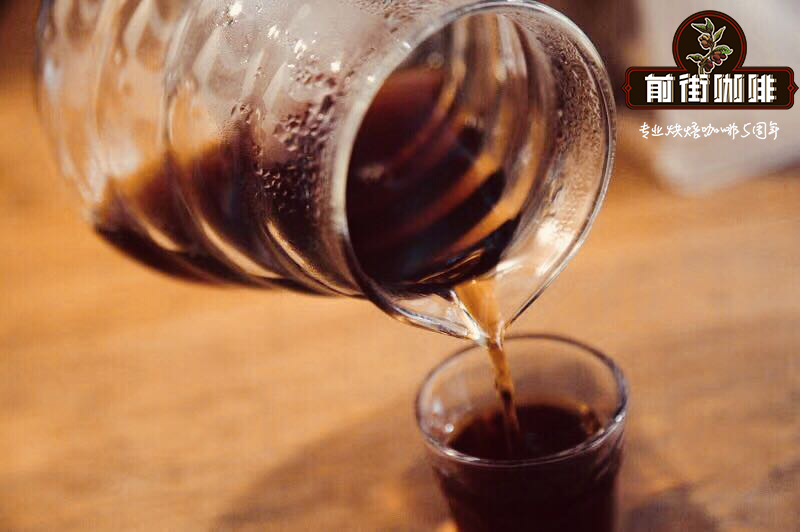The flavor and taste characteristics of the top ten coffee bean brands in the world

Professional coffee knowledge exchange more coffee bean information please follow the coffee workshop (Wechat official account cafe_style)
Qianjie-introduction to Rosa Coffee
Rosa Geisha or Gesha (Geisha in Central America) is a precious coffee variety with unique jasmine aroma and bright acidity. It often dominates all kinds of coffee competitions and becomes more and more expensive.
In 2003, the Panamanian Peterson family discovered the high-quality potential of this coffee on their farm, Hacienda La Esmeralda. They began to grow and sell the coffee in large quantities, which later won a series of "best coffee in Panama" competitions and set price records year after year at auction.
Since then, farmers in Central America and elsewhere have competed to grow rose summer. However, it seems that only under certain conditions can the high-quality potential of Rosa Rosa be fully realized, which means that not all Rosa has the extraordinary characteristics that make this variety so famous.
Rosa rugosa is a wild variety that has not yet been domesticated (turning the natural reproductive process of wild plants into an artificially controlled process) for commercial use, so the seedlings are probably not really purebred Rosa.
Most of the lineages growing in South and Central America can be traced back to the T2722 gene collected by CATIE. However, it may be because seedlings or seeds are transmitted from one farm to another, rather than being obtained directly from CATIE, and because of occasional cross-pollination, roses from different regions acquire traits from other coffee varieties, so that roses grown in different regions have subtly different characteristics.
To make matters more complicated, other species collected from the same area of the Kafa forest in Ethiopia can also be called Rosa Rosa. For example, in the CATIE database, T2917 and T3214 are also named Rose Summer. There is a huge genetic diversity of coffee varieties in the Kafa forest area, and the genes of these varieties may be very different.
Although Panama is geographically adjacent to Costa Rica, Colombia and other countries, the aroma of Panamanian coffee is very unique, balanced and rich, and it has a light but sweet acidity and moderate pure thickness. for high-quality boutique coffee producing areas! Among them, geisha coffee has attracted worldwide attention. In terms of flavor, experts' comments are rich aromas of citrus, jasmine, almonds and mangoes, sweet nectar, and bright and changeable acidity.
The jadeite red bid of the Jadeite Manor can only be obtained by competitive bidding. The price of raw beans, plus the costs of transportation, warehousing, labor, baking, wear and tear, and the difference earned by the middleman, will cost thousands of RMB per bag if you buy it in a 100g bag.
Knowledge: the variety of geisha actually comes from Ethiopia and is the direct line of Tibika (coffee tree variety)!
In short: Qianjie is a coffee research hall, happy to share the knowledge about coffee with you, we share unreservedly just to make more friends fall in love with coffee, and there will be three low-discount coffee activities every month. The reason is that Qianjie wants to make more friends drink the best coffee at the lowest price, which has been Qianjie's tenet for 6 years!
END
Important Notice :
前街咖啡 FrontStreet Coffee has moved to new addredd:
FrontStreet Coffee Address: 315,Donghua East Road,GuangZhou
Tel:020 38364473
- Prev

Introduction of World famous Coffee Bean producing area characteristics of Hawaii Kona Coffee beans
Professional coffee knowledge exchange more coffee bean information please follow the coffee workshop (Wechat official account cafe_style) front street-Hawaii Kona Coffee introduction in 1813, a Spaniard first grew coffee in the ManoaValley Valley of Oahu. Today, this place has
- Next

The Rose Summer of the Top Ten famous Brand Coffee in the World, where is the best summer to recognize Panama?
Professional coffee knowledge exchange more coffee bean information please follow the coffee workshop (Wechat official account cafe_style) front street-rose summer coffee introduction rose summer (Geisha) coffee beans in 1931 unknown from the rose mountains of southwestern Ethiopia, exported to Kenya, wandered to Tanzania and Costa Rica, transplanted to Panama in the 1960s, and then survived for nearly half a century
Related
- Beginners will see the "Coffee pull flower" guide!
- What is the difference between ice blog purified milk and ordinary milk coffee?
- Why is the Philippines the largest producer of crops in Liberia?
- For coffee extraction, should the fine powder be retained?
- How does extracted espresso fill pressed powder? How much strength does it take to press the powder?
- How to make jasmine cold extract coffee? Is the jasmine + latte good?
- Will this little toy really make the coffee taste better? How does Lily Drip affect coffee extraction?
- Will the action of slapping the filter cup also affect coffee extraction?
- What's the difference between powder-to-water ratio and powder-to-liquid ratio?
- What is the Ethiopian local species? What does it have to do with Heirloom native species?

